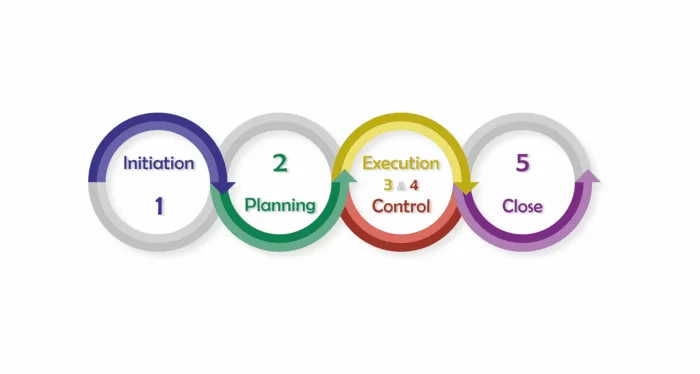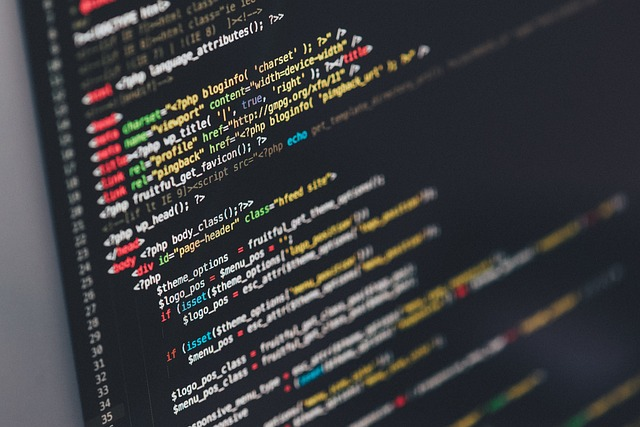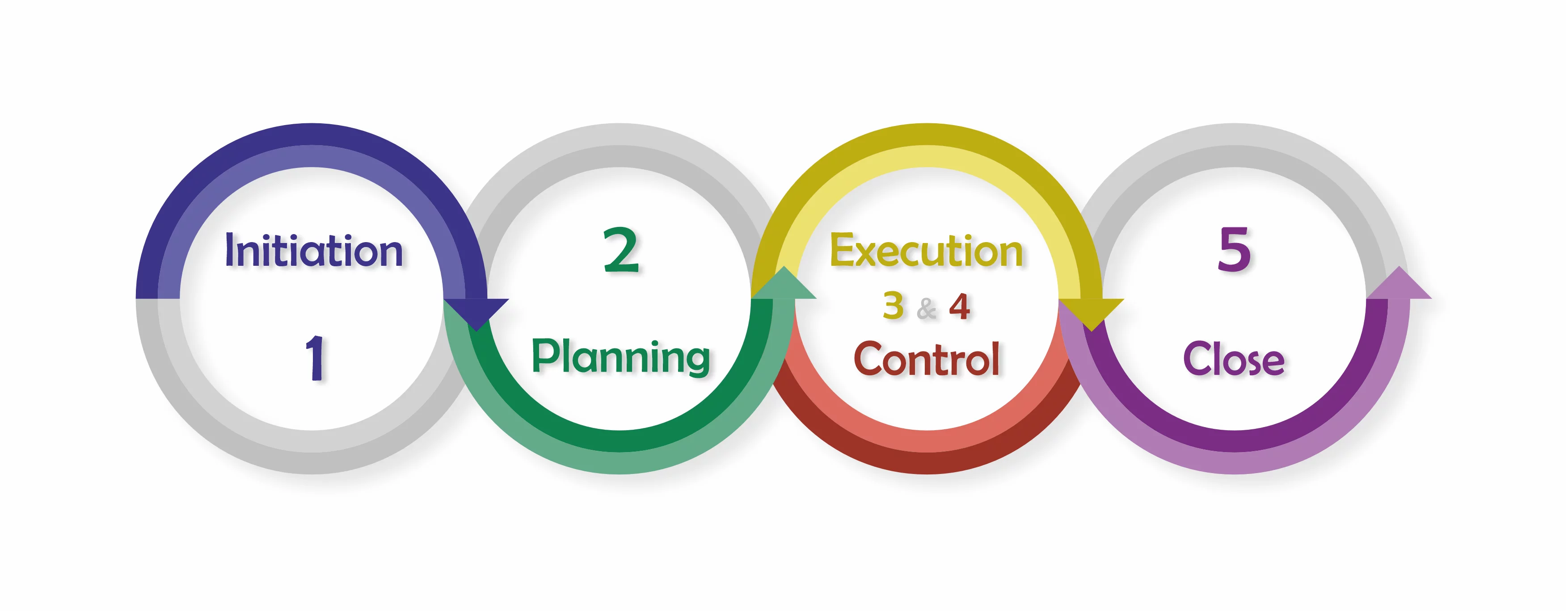
The 5 Stages of Project Management
In the modern work environment, it is virtually impossible to navigate all the tasks and processes without some type of Project Management tool or knowledge.
While a Project Manager can be very useful to your company, it is not the right fit for all types of businesses, especially those employing a Lean project management approach. Other companies might not yet be ready to make the investment in having a project manager.
However, not having a project manager on your project team doesn’t mean you should go into your future projects blind and without knowing the best practices and making the most well-informed decisions.
What are the 5 Project Management Phases?
According to the PMBOK – Project Management Body of Knowledge, created by the Project Management Institute (PMI), the 5 Project Management Stages are usually defined as Initiation, Planning, Execution, Control, and Close.
Each project starts with its conception and initiation, which is when you are gonna look at the goal and evaluate if you should go on with it at all. Next comes the planning phase, in which you are going to determine how the project will be carried out, and what the project team is and create a plan.
The third stage, execution, is when you will work on the actual project. Control usually occurs concurrently with the execution and will consist of the monitoring of progress and performance. Lastly, the closing phase is when you will tie the loose ends and hand over your deliverables.
Project initiation

A project is initiated with its definition. That can be a business case or a project charter. It is in this initiation phase that any feasibility studies should be carried out to then determine if the project is going to move forward.
If you decide to move forward with the project, this is the time to create a project initiation document (PID). This document is the basis of your project and will help draw out several of its central aspects. On top of your business case or project charter, some of the aspects the PID should cover are the project’s objectives, magnitude, and scope, a draft of the project organization – a timeline, who will be responsible for what, the project’s limitations, and its stakeholders.
*It is important to remember that the PID is a project plan. Its content is not necessarily final and it doesn’t have to include details of execution or technicalities. Those can be figured out during the planning phase.
Project Planning

Out of all the five project management phases mentioned, project planning is arguably the most important one. A good and thorough project plan can set you up for success. On the other hand, poor project planning can be the downfall of any enterprise. You definitely don’t want to under-prepare while making your project plan.
During the project planning phase, you will have to deepen the aspects of the project’s outline created during the initiation stage. At this point, you will have to define a budget for your project, have a somewhat final timeline and milestones – although adjustments are bound to be needed, and create processes for the execution and progress measurement.
Planning is also the time to come up with a communication plan. That consists basically of who will need to know what, and when are they gonna need to know it. On top of that, you should determine a channel of communication. If your project involves external stakeholders the plan should also include the communication that involves them.
For example, if you are developing a project for a client, you should determine specific dates to report your progress to them. If you are outsourcing some of the tasks in the project, it your plan for communication should include what type of information you need to share with these external collaborators, the deadlines for their tasks, and so on.
A risk management plan can also be another important part of the planning process. Anticipating what problems may occur and how you can deal with them will make issues less likely to arise and also allow you to have a process already set up in order to deal with them.
Before you start executing the project you should also define what tools and metrics you are using to monitor progress, key performance indicators, and budget. If you are looking for a tool for managing your projects, consider using our app. It is the most highly Google-integrated app, with a friendly interface extremely easy to learn.
Project Execution or Project Implementation

Simply put, the project execution phase is the carrying out of your plan. In this stage, you will produce the end product – or carry out the service – of your project. This is the busiest stage of the whole project life cycle since the entire team will be undertaking their own activities.
If you are developing software, for example, this is when all the coding will happen. Generally, execution also tends to be the longest phase of a project, although it can obviously vary. During the execution, whoever is acting as the project manager should ensure everything is running smoothly and according to plan.
Although listed separately, project execution and control are usually parallel phases of the project management process. The progress of the project has to be monitored throughout the entire process.
Project Control or Project Monitoring

To ensure the seamless execution of the project, it is important for project managers not to lose sight of the big picture. The person in charge of the project, whether a project manager by trade or not, should constantly monitor the progress of tasks and promptly deal with any unforeseen issues and delays.
On top of making sure the schedule is being followed, they should stick to the planned budget as much as possible.
During project performance monitoring, it is also important to keep control over performances within the team. As mentioned before, the parameters for performance measurement should be set during the planning phases of the project.
If for some reason anyone in the team is not keeping up with their attributions, make sure you have the means to find a replacement or redistribute their tasks. Don’t let a struggling team member disrupt the entire flow of the project.
Project Close or Project Closure

The close of a project is the final stage, in the project management life cycle in which all work is completed. A close does not always mean success. A failed project could end with its cancellation, which would still be a closure.
Close is also the time to tie the knots. Let go of temporary resources, such as tools and outsourced staff. Making a final budget and report, and handing over all deliverables are also some of the tasks you might have to do before finishing up a project.
After the close of the project, you may also want to carry out a project review. That will help you evaluate the positives and negatives of the project, and improve your processes for the next one.
How to ensure you won’t have problems during the execution phase of your project
To help you remember what you should do before you start executing your project, we made a checklist. As we said, the more you prepare in the beginning, the more likely your project is to succeed.
Initiation phase
- Feasibility study, if applicable
- Write a Project Initiation Document (PID)
- The project goal, scope, and magnitude
- Project stakeholders
- Organization draft: timeline draft/responsibilities
- Budget draft
- Project’s limitations
Planning phase
- Final organization of the project
- Progress evaluation process
- Performance evaluation process
- Final assignees for tasks
- Communication plan
- Tools needed for execution and monitoring
- Risk management plan
This list is definitely not exhaustive, and depending on the specificities of your project, there might be different things you should do to make sure you are fully prepared. However, it is a good start for the management of the majority of projects.

